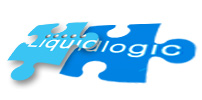Horizontal applications in health and social care
- 10 December 2007
 By Denise Harrison, director and co-founder of Liquidlogic
By Denise Harrison, director and co-founder of Liquidlogic
Recent years have seen a transformation in health and social care applications, with changes and adaptations coming in light of new government initiatives.
Greater collaboration and information sharing between health and social care agencies will continue to lead to improvements in patient and service user experience.
With this patient-centric approach, horizontal integration – multi-agency teams operating across multiple organisations with a shared IT solution – is a natural choice. Crucially it allows for tighter co-ordination between health and social care agencies.
We can see horizontal integration working in practice with the Single Assessment Process. Here teams have been created across primary, secondary and social care organisations, increasingly using pooled budgets and joint funded posts. Looking to the future the ‘Our Health, Our Care, Our Say’ white paper mirrors this approach, with Integrated Care Plans for adults the standard from 2008 onwards.
For children’s social services, horizontal integration has been a pre-requisite for some time; in 2003 the information sharing and assessment initiative (now replaced by eCAF) enabled various agencies, including health care, education and social services, to collaborate and share data effectively.
The recent introduction of an Integrated Children’s System provides combined information from health, education and social care records to local authorities. A further development of this approach will arrive in 2008, opening access to these records to a wider range of professionals involved in the care and protection of vulnerable children.
Attempts to expand user access to an IT system designed to be monopolistic creates problems of scalability and insufficient density of security. Therefore, these new organisational models, with their greater reach, necessitate a new technological approach in the form of the horizontal application.
Previously, a key drawback to implementing cross-agency systems has been the need to enter data separately – e.g. into primary care, social care and mental heath records – to ensure integrity of information held in local systems.
Horizontal applications negate this problem, automatically updating data entered into partner systems. By way of example, the Protocol eSAP system, deployed via CFH, has in excess of 8,000 users who access the system from 80 plus organisations and is available on a 24 x 7 basis, integrating information from health and social care systems.
There is a view that cultural barriers and differences in terminology used by agencies can impede the efforts of joint working. However, a system that highlights clear areas of action and responsibility for each faction should allow for successful joint working.
An increasing number of government initiatives utilising multi-agency working across health and social care indicate horizontal integration is a requirement that is here to stay. Future requirements will no doubt look to integrate additional public services such as housing, education, the police and the third sector. The challenge will be to ensure that emerging horizontal technologies are scalable enough to cope with increasing data volumes and have adequate security features to ensure shared data is seen only by those authorised to do so.




